Steven Spielberg’s big screen adaptation of West Side Story is finally here. And we loved it! That said, there were quite a few differences between this 2021 take (okay technically 2020 but, you know, COVID!) and the original 1961 movie. They were changes that gave us a fresh take on a musical we thought we knew well. While we at Goggler hold the original 1961 film in very high regard, Steven Spielberg has done enough to make this version uniquely his.
What follows is a list of three major changes that make this new version of West Side Story stand apart from the old one. It is also worth noting that Steven Spielberg has been very clear in saying that this 2021 version isn’t a remake of the 1961 movie, but rather a big screen adaptation of the original 1957 stage musical.
1. Tone

The 1961 movie, made just four years after the musical debuted on Broadway, had elements of surrealism. It wasn’t a full blown fantasy, it was just a little unrealistic. Take, for example, the opening skirmish between the Jets and the Sharks. In the 1961 movie, their fight is far more balletic than it is violent. The Jets aren’t so much stalking the streets of New York as they are prancing through it.
In Spielberg’s version, the fight between the Jets and the Sharks descends into chaos. A Shark gets hit in the head with a paint can. Punches are thrown. It’s actual war. This change gives Spielberg’s version more weight. Yes there is still singing and dancing, but it isn’t as “silly.” (Don’t get me wrong. I don’t mean “silly” in a negative way. The 1961 version of West Side Story is still a favourite here in this household). The shift in tone makes this version of the Broadway musical feel more realistic.
The most obvious change from 1961 surrealism to 2021 realism happens when Tony and Maria first meet. In the 1961 movie, when Tony makes eye contact with Maria, the rest of the gym fades away (it happens at the 39 minute mark if you’re curious). There is an almost dream like quality to the sequence. The blurred out gym. Its dancing occupants giving way to these two doomed lovebirds. The way the music fades as they walk to the center of the court to meet. The conversation they have is stilted. They say things to each other, but almost as if to themselves as well. The moment is perfect. Not a “meet-cute” per se, but definitely the definition of love at first sight captured on film.
Spielberg removes the “magic” of the moment by having Tony and Maria escape from the crowd to go under the bleachers. The sequence is almost identical, but without the fantasy of the earlier version. I’m not saying that the scene is worse. Just different. There is a dance from the 1961 version that has become iconic, and although the dance is repeated, having it take place outside of a dream sequence does cause it to lose some of its magic.
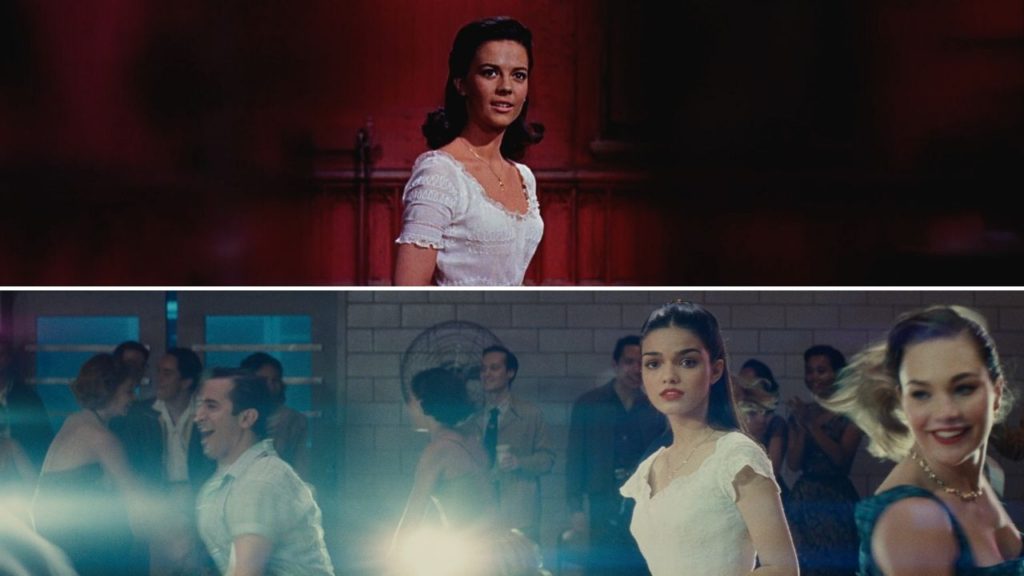
Spielberg also changes the way his West Side Story opens. In the 1961 version, the movie opens with an aerial shot over Manhattan, taking the viewer from the big high rises and expensive parts of New York, to the slums and ghettos where the movie is set. This aerial shot truly drives home the class divide of New York, from the rich movers and shakers, to the forgotten people who make up the island.
The 2021 movie however opens over a demolition site, the walk up apartments and ghettos having been torn down in the name of expansion, progress, and gentrification. In Spielberg’s version, the West Side hasn’t been forgotten, so much as it has been earmarked for redevelopment. Which is probably a worse fate for its residents.
This shift in tone never detracts from the Ernest Lehman screenplay, but Spielberg and screenwriter Tony Kushner don’t add to it. They makes it their own. This 2021 version is less than the 1961 movie, but in a lot of ways it is also more.
2. Story
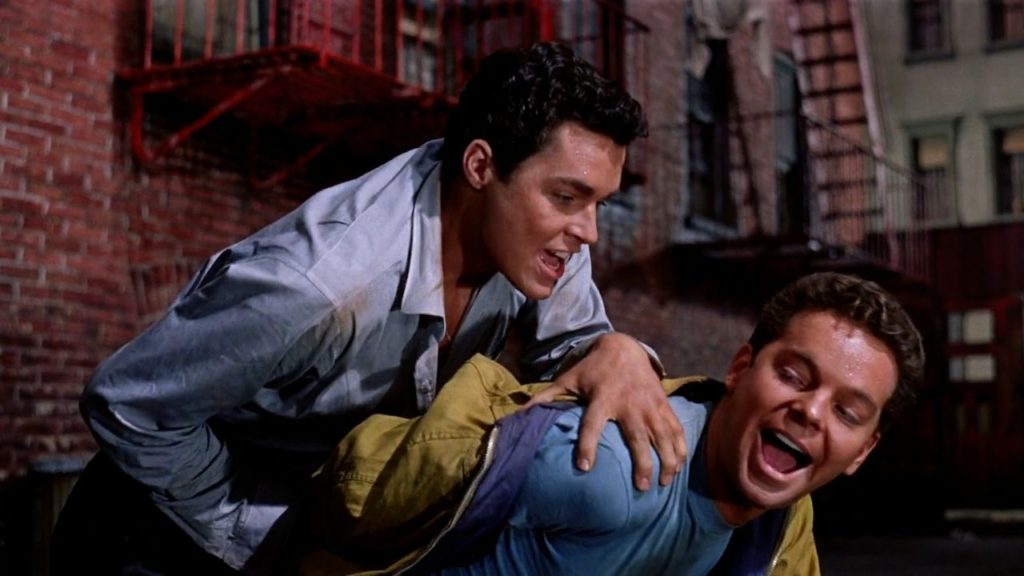
Spielberg and Kushner make some, let’s call it, adjustments to the story as well. In the relationship between Tony and Riff, there is a slight shift of story weight from the 1961 version where Riff, not wanting to live with his uncle (Uncle!), moves in with Tony and his family. This bond of brotherhood between Tony and Riff is made more familial — same roof, same food — that kind of thing.
This 2021 version gives Tony more backstory. In the 1961 film, the reasons for Tony leaving the Jets are less clear. He just left. The implication is that Tony just wants something different. He wants to grow up and not be part of a gang. Spielberg however gives Tony a more realistic reason for wanting out. After a previous rumble with a different gang, Tony had gone too far and almost kills a kid. He then gets sent away to prison where he realises the error of his ways and wants out of the Jets.
In this shift, the tension between Tony, Riff, and the rest of the Jets becomes clearer. Tony sees what can happen if he stays in the gang. The Jets see Tony as a traitor, as someone who quits after doing what they see is right by the gang. And Tony’s motivation as he sings “Something’s Coming” is stronger. Tony doesn’t want to end up back in prison. He sees something better on the horizon, and doesn’t want to risk it by getting into trouble.
There is also a swap with the Doc character from the original. In the 1961 movie, Doc is a kindly old gentleman that runs the corner drugstore/soda shop which serves neutral ground between the Jets and the Sharks. It is also where Tony works.
In the 2021 film, the Doc character has been swapped with that of Valentina, Doc’s widow. But this isn’t just a simple gender swap situation. Rita Moreno’s Valentina is Puerto Rican, while the late Doc was Caucasian. The change is as much to have Rita Moreno back in a movie that made her so famous (she was Anita in the 1961 movie), while also to give Tony’s character hope. Knowing Valentina was married to a white man gives Tony hope that things could work out between him and Maria.
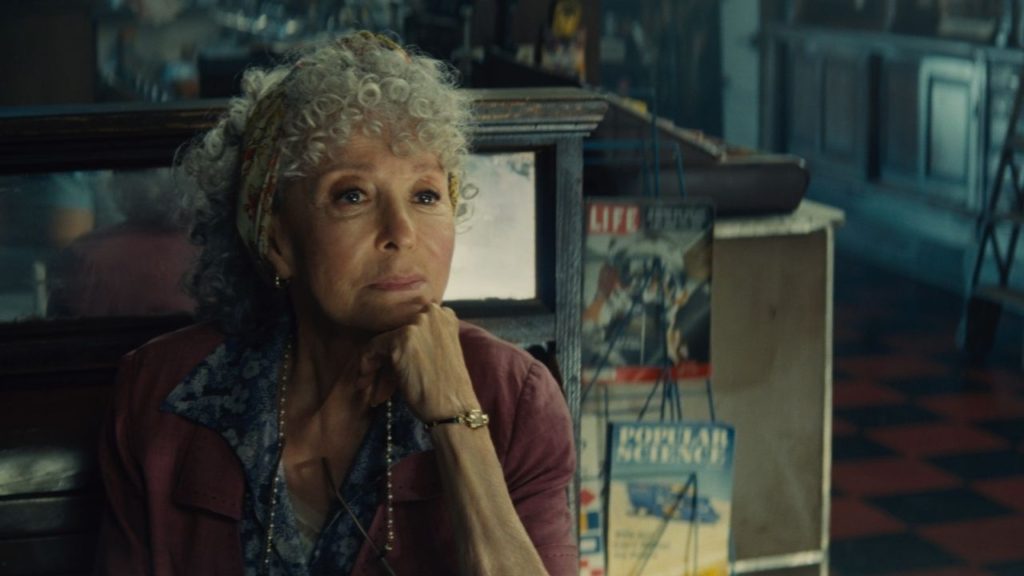
The shift to Valentina from Doc also provides a different emotional weight to a scene that happens later on in the film. In both the 1961 and 2021 movies, the Jets end up at Doc’s drugstore after the rumble as Tony is in the basement packing up to leave. Anita then comes to give Tony a message from Maria who is being questioned by Lieutenant Schrank. Anita is then attacked by the members of the Jets before Doc/Valentina comes to stop them going too far.
In the 1961 movie, Doc pulls the Jets off of Anita, telling them “When do you kids stop?” He is frustrated, he is disappointed, but most of all it feels like Doc is tired. Tired of all the fighting. Ned Glass’ Doc feels like the loving grandfather who is too old to keep pulling his grandchildren away from the edge. He is begging them to pull themselves together and understand the consequences of their actions.
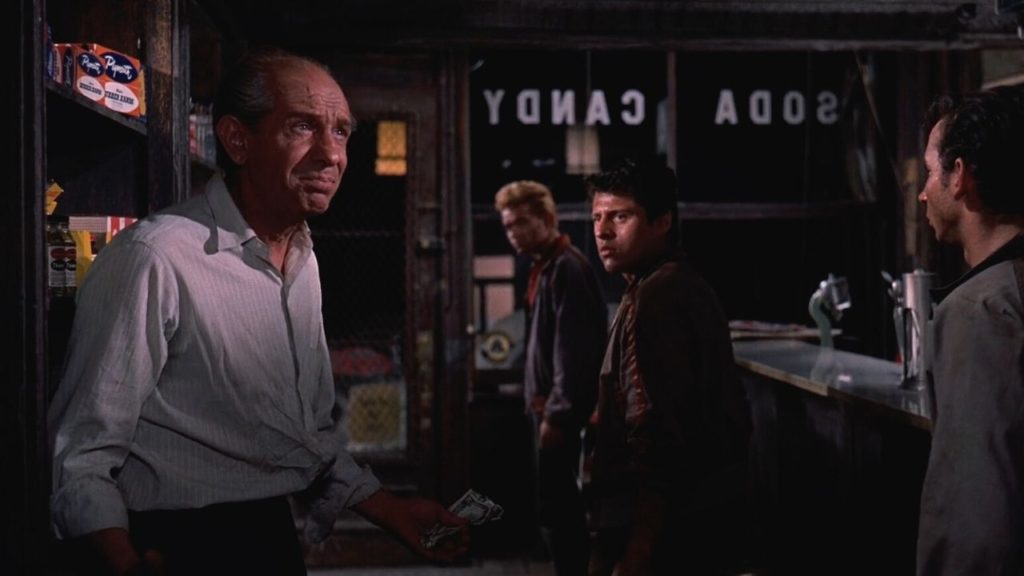
Spielberg however goes all in. In his version of the attack on Anita, it’s clearer that the Jets were on the verge of rape. And as Valentina stops them, she admonishes them, angry at the monsters they’ve become. “I’ve known you since you were children” she says to the boys. The swapping of Doc with Valentina is more than just a gender swap of a character, it provides a different weight to this scene, her anger more severe.
In the 1961 movie the deaths at the rumble and the attack on Anita feel like the two big emotional peaks in the story. Up until those two moments, West Side Story had felt like a bit of fun and games. Some dancing, some kicking, a little territorial pissing between two gangs of kids that never really go too far. Sure there were skirmishes in the past, and Sergeant Krupke and Lieutenant Schrank are all too familiar with the Jets and the Sharks. But it wasn’t until the deaths of Bernardo and Riff that they began to take them seriously as criminals. Until that point, it never feels like either gang had ever come close to crossing the line.
Spielberg’s West Side Story very clearly sets this up as something more than just a story about a bunch of street kids with too much energy: Tony’s previous run in with another gang that send him to prison, the Jets defacing a Puerto Rican mural, the decided lack of ballet fighting. The 2021 West Side Story is heavier and more serious. And Valentina’s saving of Anita isn’t so much an emotional peak, but an exclamation point to the fighting. Valentina realises that had she not stepped in, the Jets’ would have taken that final step to being absolute monsters.
3. Music
This may sound obvious, but the music plays an integral part of this story. (It is a musical. Duh!) The placement of the musical numbers help a story’s tempo, and in building and releasing tension. The 1961 movie has been so ingrained in popular culture that the flow of the songs have become almost set in stone.
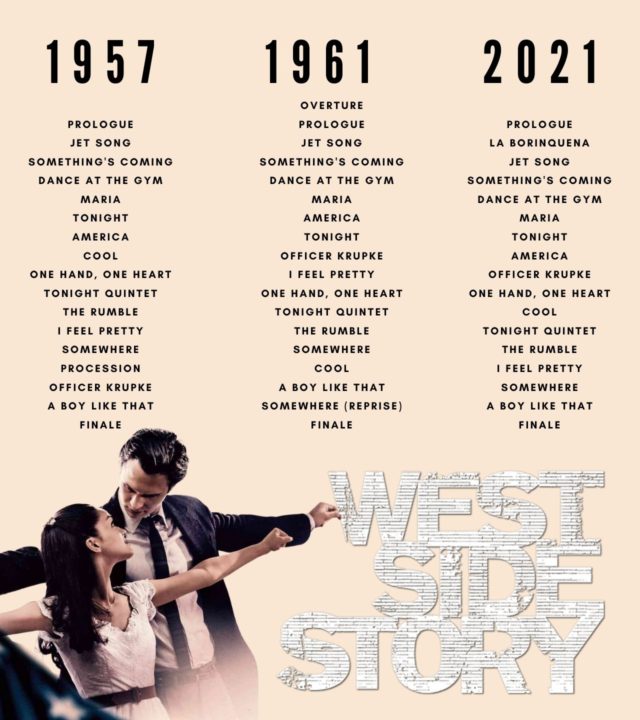
As you can see from the above graphic, Spielberg doesn’t shake the music order too much. The biggest change is to move the song “Cool” from after the rumble (1961) to before it. Spielberg also changes the focus of the song, from being sung by the surviving members of the Jets after Riff is murdered, to being sung by Tony to Riff. This shift changes the song’s meaning, from a band of brothers wanting revenge for their fallen leader, to Tony trying to get Riff and the Jets to not fight. The song remains the same, but the reason behind the song changes. This shift also puts the song closer to where it was in the original 1957 Broadway musical, which was towards the end of the first act.
There is also a move for the song “America,” from between “Maria” and “Tonight” in the 1961 movie, to after the two duets. This is also a reflection of the original Broadway musical, where the fire escape sequence (where the songs “Maria” and “Tonight” are sung) is played out in full, as opposed to being broken up by “America” in the 1961 movie. In Spielberg’s West Side Story, “America” is sung the following day, and not the same night.
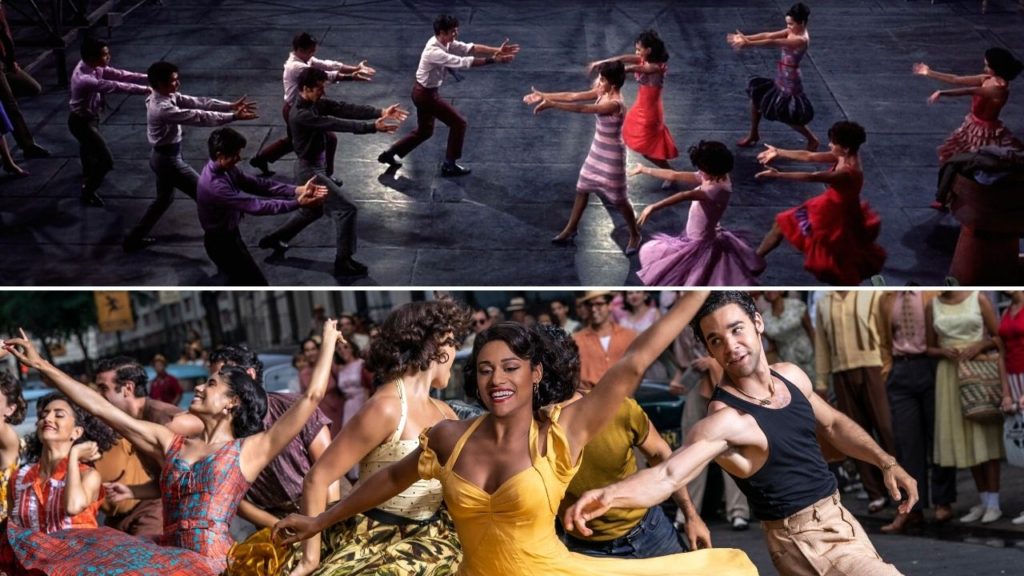
The 2021 movie’s track listing lists a song called “Transition to Scherzo/Scherzo” that plays before “America.” Although not listed in the Wikipedia page for the 1957 Broadway version, there are YouTube videos of the song as conducted by Leonard Bernstein so it’s worth noting that it may have been played in the original as well.
Spielberg also changes the setting of the song “Officer Krupke.” In the 1961 movie, the fun ditty is sang by Riff and the Jets outside of Doc’s drugstore as they wait for the Sharks to show up for the war council. In his movie, Spielberg shifts the song to inside a police station. It’s also sung without Riff. This shift in setting seems to be a closer reflection of the original 1957 Broadway version of West Side Story, however the placement of the song in the middle of the movie is more in line with the 1961 version.
The only new song Spielberg adds to his West Side Story is “La Borinqueña,” the national anthem of Puerto Rico, very early on in the movie.
Reprise
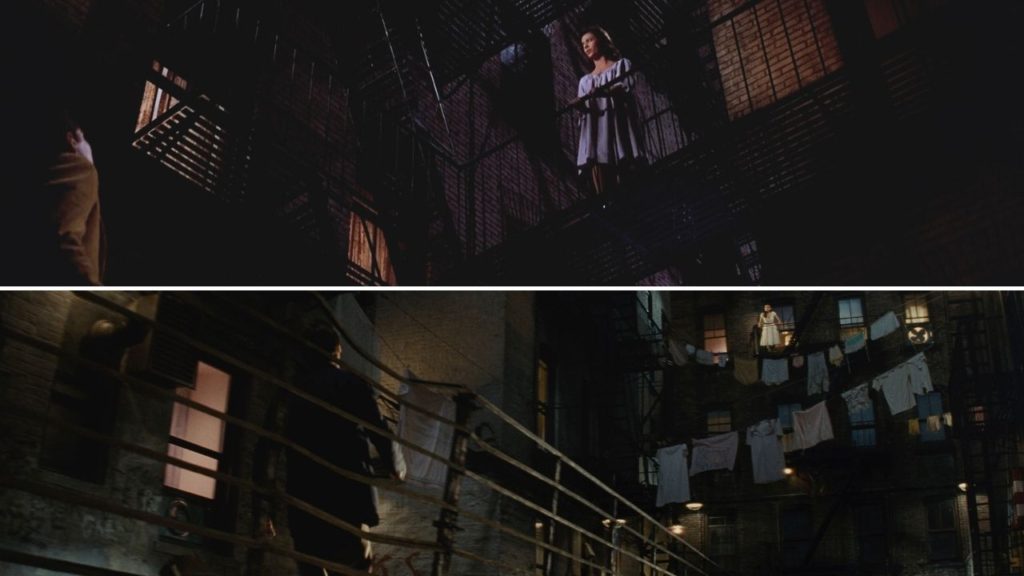
None of these changes break West Side Story. Steven Spielberg and Tony Kushner’s version is similar enough to not be a reimagining of the beloved 1961 movie. But in moving some of the pieces around and adding more story, Spielberg and Kushner have subtly changed the tone and added heft to the story of these two star crossed lovers. To quote my colleague in his review of Steven Spielberg’s West Side Story;
I am not here to tell you if this version is better or worse than that one. To do so would be to indulge in a false equivalence because both movies are very different things.
The 1961 version of West Side Story had an innocence to it. Yes, the Jets and the Sharks were fighting. Yes, these are gangs patrolling their territory. But it felt innocent. The lovers were chaste. This new West Side Story never feels innocent. It never feels like a bit of fun and games gone too far.
These two versions of the same story, with the same songs, are told from two very different lenses. And they are both absolutely wonderful.

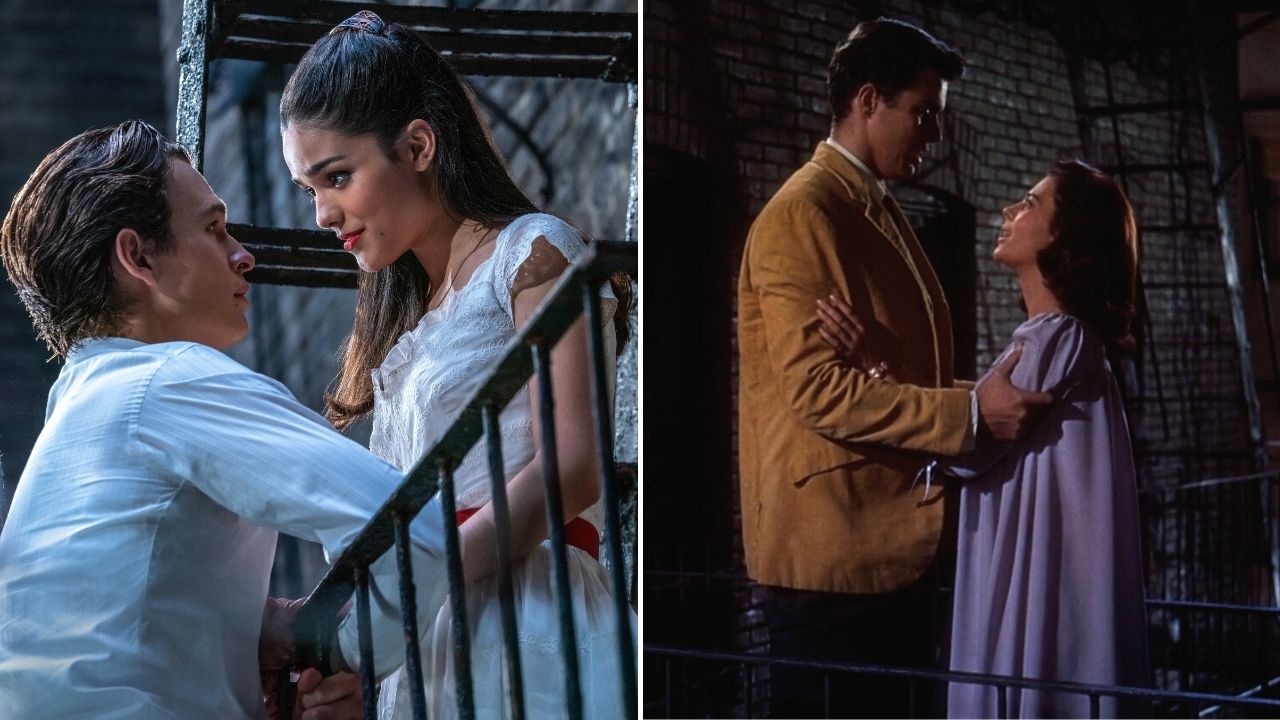


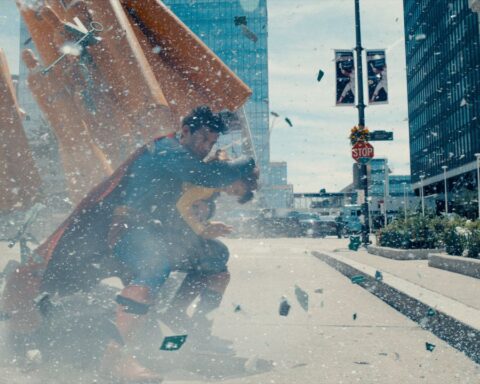
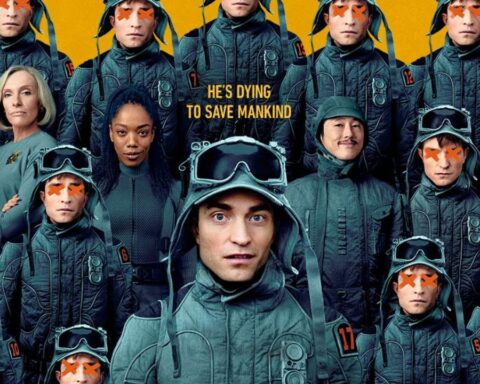
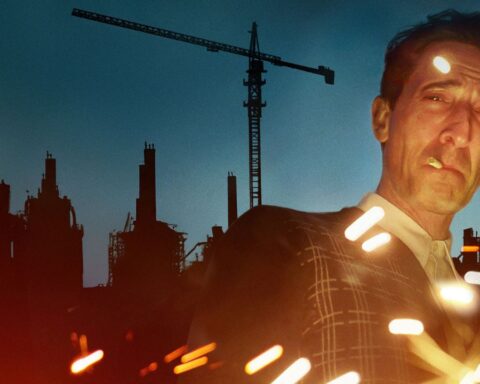

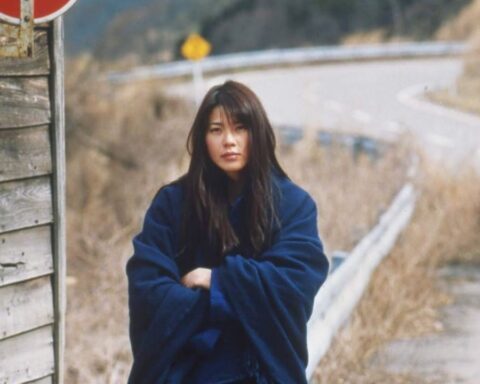
Follow Us